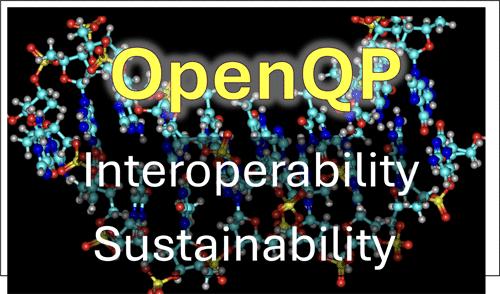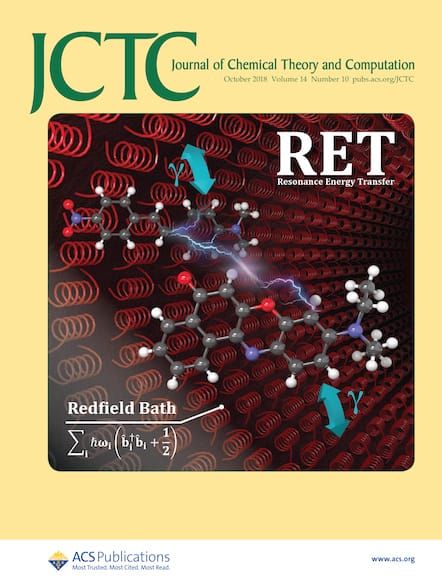OpenQP: A Quantum Chemical Platform Featuring MRSF-TDDFT with an Emphasis on Open-Source Ecosystem
IF 5.5
1区 化学
Q2 CHEMISTRY, PHYSICAL
引用次数: 0
Abstract
The OpenQP (Open Quantum Platform) is a new open-source quantum chemistry library developed to tackle sustainability and interoperability challenges in the field of computational chemistry. OpenQP provides various popular quantum chemical theories as autonomous modules such as energy and gradient calculations of HF, DFT, TDDFT, SF-TDDFT, and MRSF-TDDFT, thereby allowing easy interconnection with third-party software. A scientifically notable feature is the innovative mixed-reference spin-flip time-dependent density functional theory (MRSF-TDDFT) and its customized exchange-correlation functionals such as the DTCAM series of VAEE, XI, XIV, AEE, and VEE, which significantly expand the applicability scope of DFT and TDDFT. OpenQP also supports parallel execution and is optimized with BLAS and LAPACK for high performance. Future enhancements such as extended Koopman’s theorem (EKT)-MRSF-TDDFT and spin–orbit coupling (SOC)-MRSF-TDDFT will further expand OpenQP’s capabilities. Additionally, a Python wrapper PyOQP is provided that performs tasks such as geometry optimization, conical intersection searches, and nonadiabatic coupling calculations, among others, by prototyping the modules of the OpenQP library in combination with third-party libraries. Overall, OpenQP aligns with modern trends in high-performance scientific software development by offering flexible prototyping and operation while retaining the performance benefits of compiled languages like Fortran and C. They enhance the sustainability and interoperability of quantum chemical software, making OpenQP a crucial platform for accelerating the development of advanced quantum theories like MRSF-TDDFT.

OpenQP:以 MRSF-TDDFT 为特色的量子化学平台,强调开源生态系统
OpenQP(开放量子平台)是一个新的开源量子化学库,旨在解决计算化学领域的可持续性和互操作性难题。OpenQP 以自主模块的形式提供各种流行的量子化学理论,如 HF、DFT、TDDFT、SF-TDDFT 和 MRSF-TDDFT 的能量和梯度计算,从而方便与第三方软件互联。在科学方面的一个显著特点是创新的混合参考自旋翻转时间相关密度泛函理论(MRSF-TDDFT)及其定制的交换相关函数,如 VAEE、XI、XIV、AEE 和 VEE 的 DTCAM 系列,这极大地扩展了 DFT 和 TDDFT 的适用范围。OpenQP 还支持并行执行,并使用 BLAS 和 LAPACK 进行了优化,以获得更高的性能。未来的增强功能,如扩展库普曼定理(EKT)-MRSF-TDDFT 和自旋轨道耦合(SOC)-MRSF-TDDFT 将进一步扩展 OpenQP 的功能。此外,OpenQP 还提供了 Python 封装器 PyOQP,通过将 OpenQP 库的模块原型与第三方库相结合,执行几何优化、锥交搜索和非绝热耦合计算等任务。总体而言,OpenQP 符合高性能科学软件开发的现代趋势,它提供了灵活的原型设计和操作,同时保留了 Fortran 和 C 等编译语言的性能优势,增强了量子化学软件的可持续性和互操作性,使 OpenQP 成为加速 MRSF-TDDFT 等先进量子理论开发的重要平台。
本文章由计算机程序翻译,如有差异,请以英文原文为准。
求助全文
约1分钟内获得全文
求助全文
来源期刊

Journal of Chemical Theory and Computation
化学-物理:原子、分子和化学物理
CiteScore
9.90
自引率
16.40%
发文量
568
审稿时长
1 months
期刊介绍:
The Journal of Chemical Theory and Computation invites new and original contributions with the understanding that, if accepted, they will not be published elsewhere. Papers reporting new theories, methodology, and/or important applications in quantum electronic structure, molecular dynamics, and statistical mechanics are appropriate for submission to this Journal. Specific topics include advances in or applications of ab initio quantum mechanics, density functional theory, design and properties of new materials, surface science, Monte Carlo simulations, solvation models, QM/MM calculations, biomolecular structure prediction, and molecular dynamics in the broadest sense including gas-phase dynamics, ab initio dynamics, biomolecular dynamics, and protein folding. The Journal does not consider papers that are straightforward applications of known methods including DFT and molecular dynamics. The Journal favors submissions that include advances in theory or methodology with applications to compelling problems.
 求助内容:
求助内容: 应助结果提醒方式:
应助结果提醒方式:


